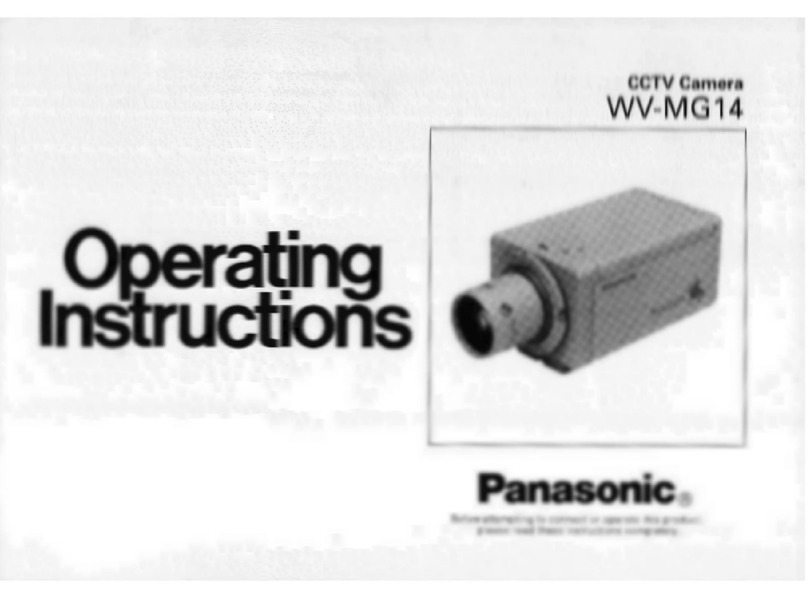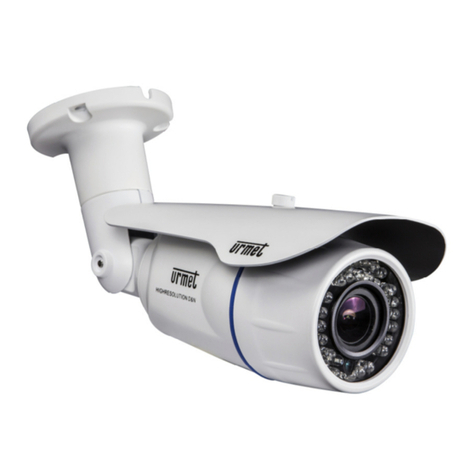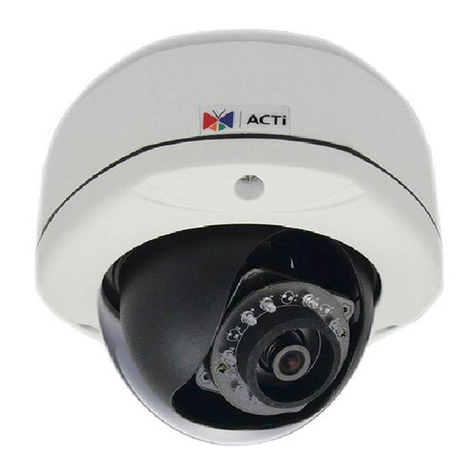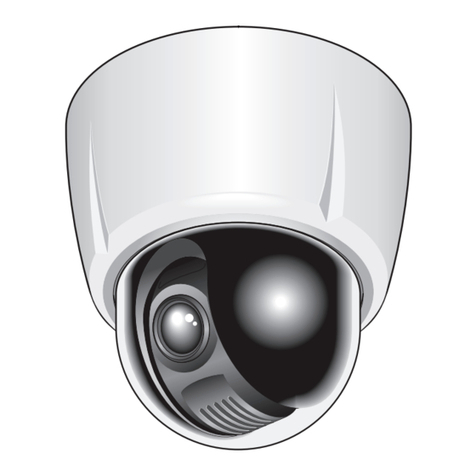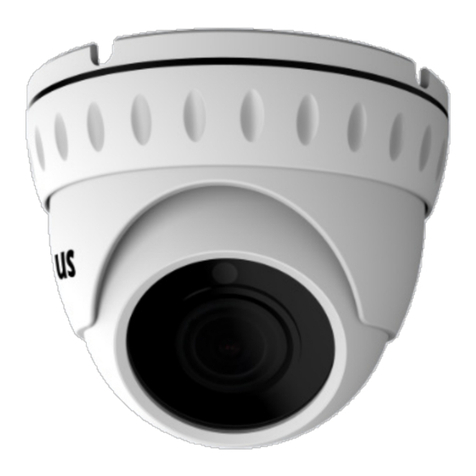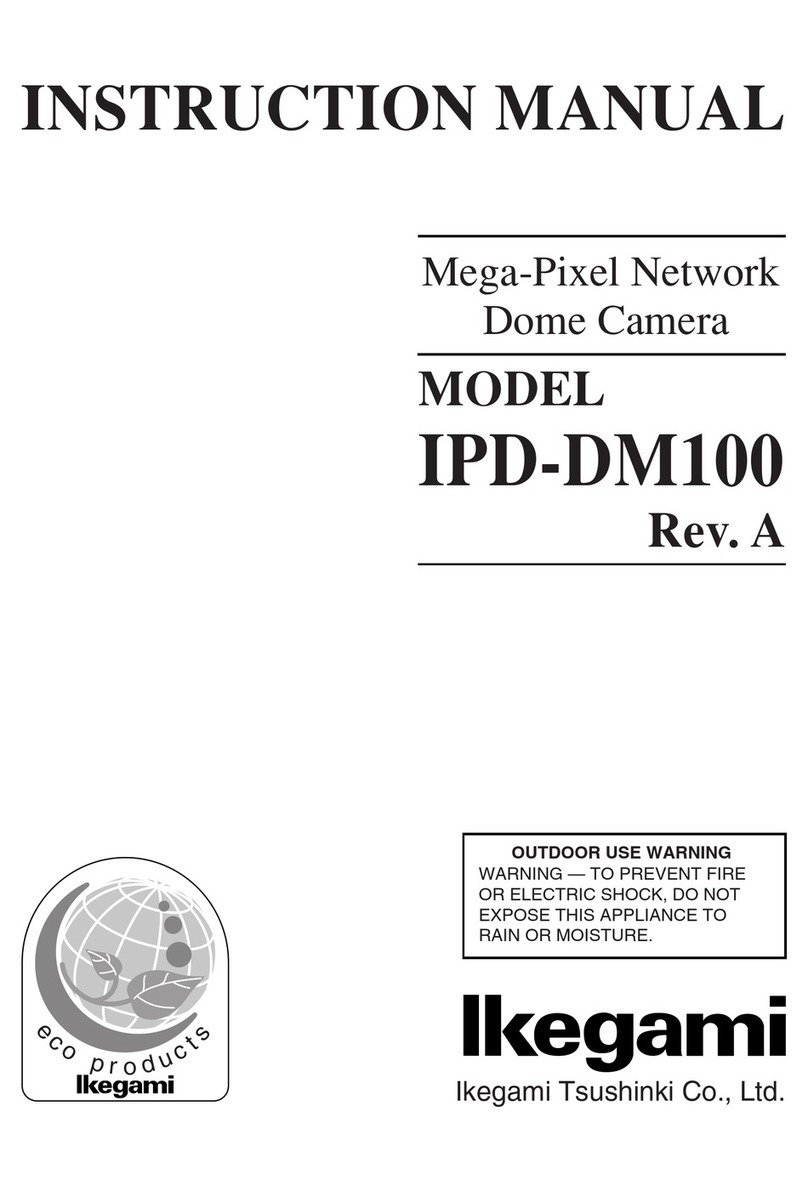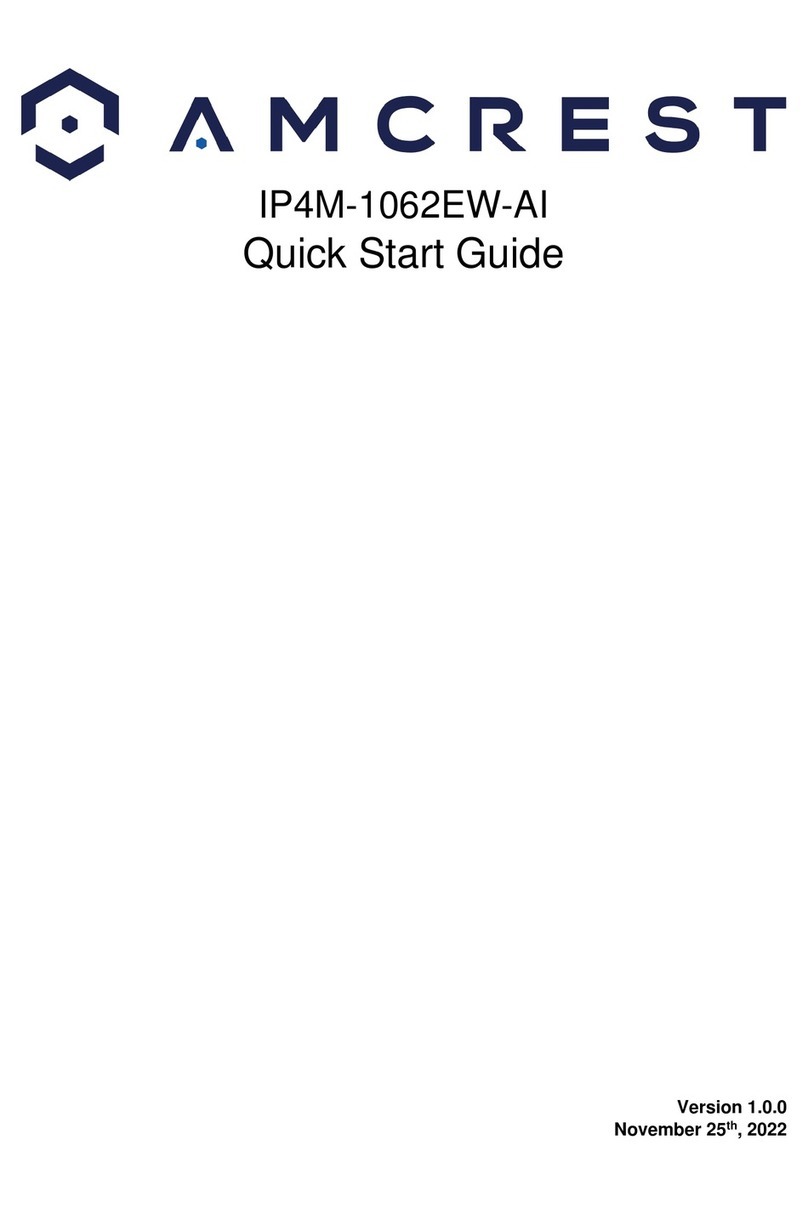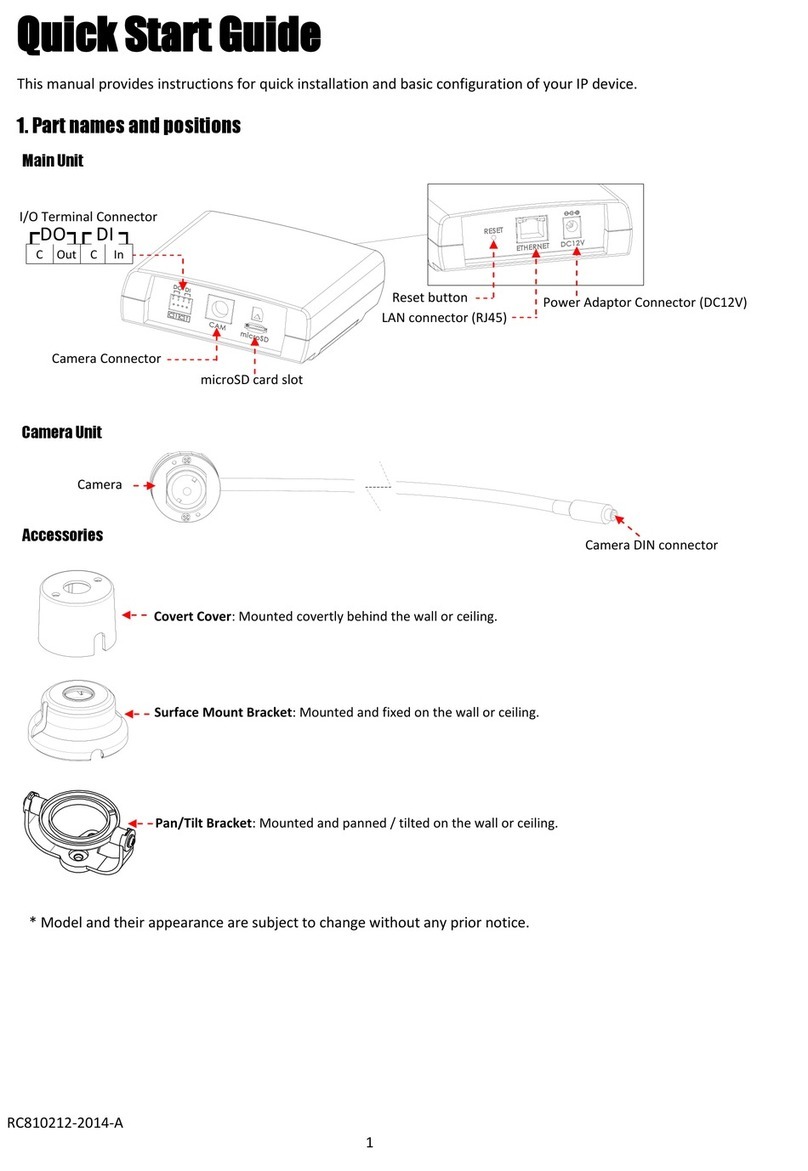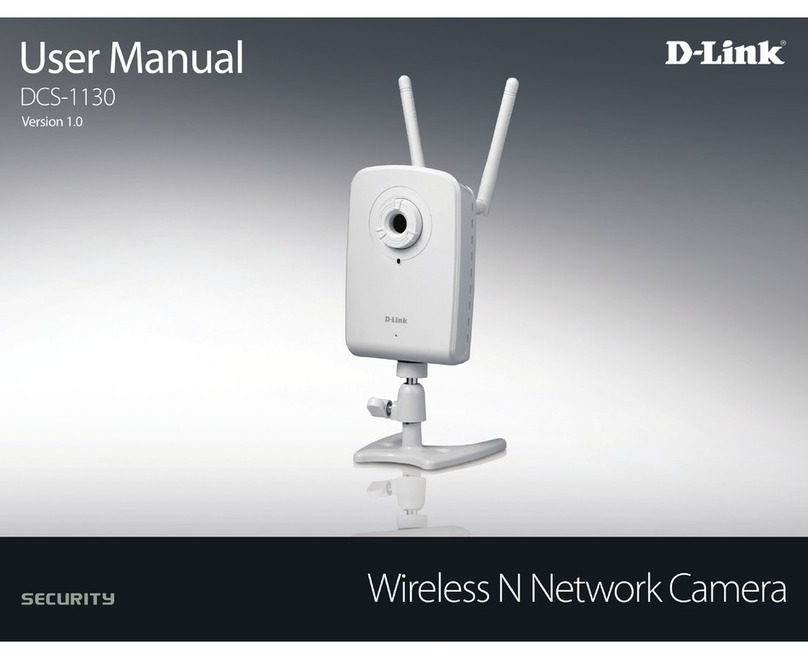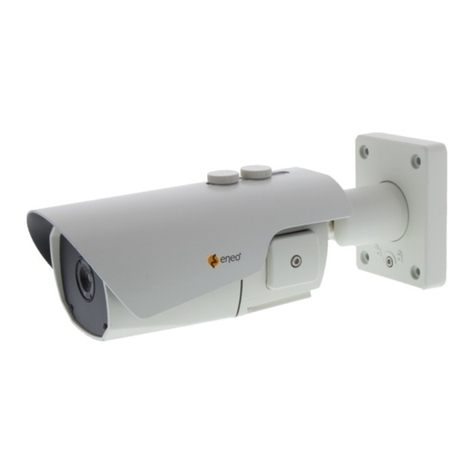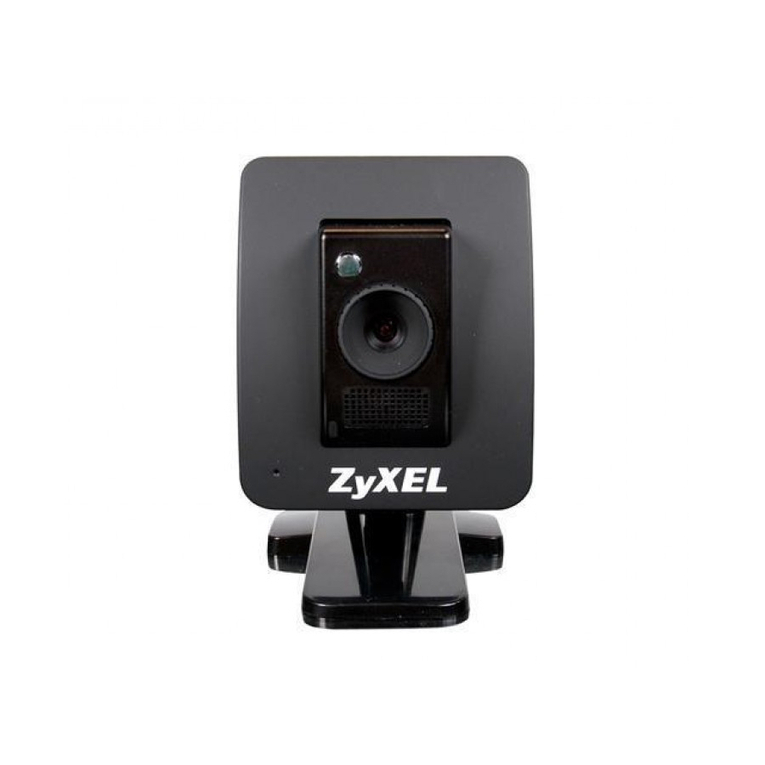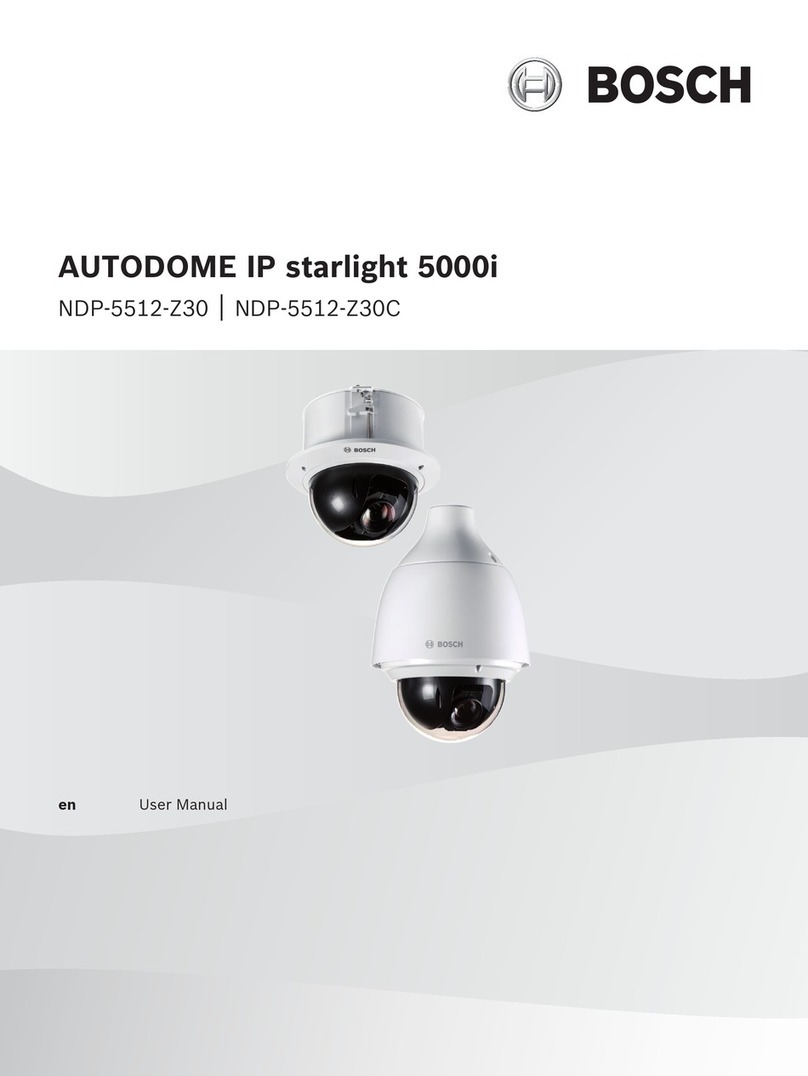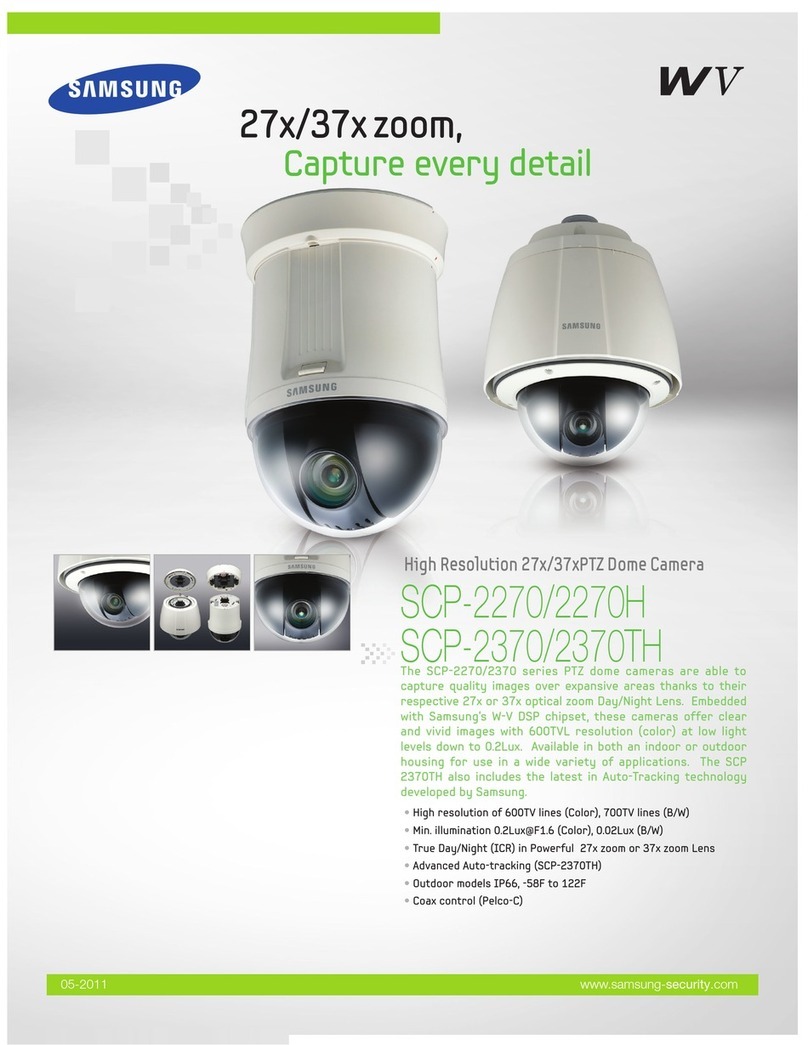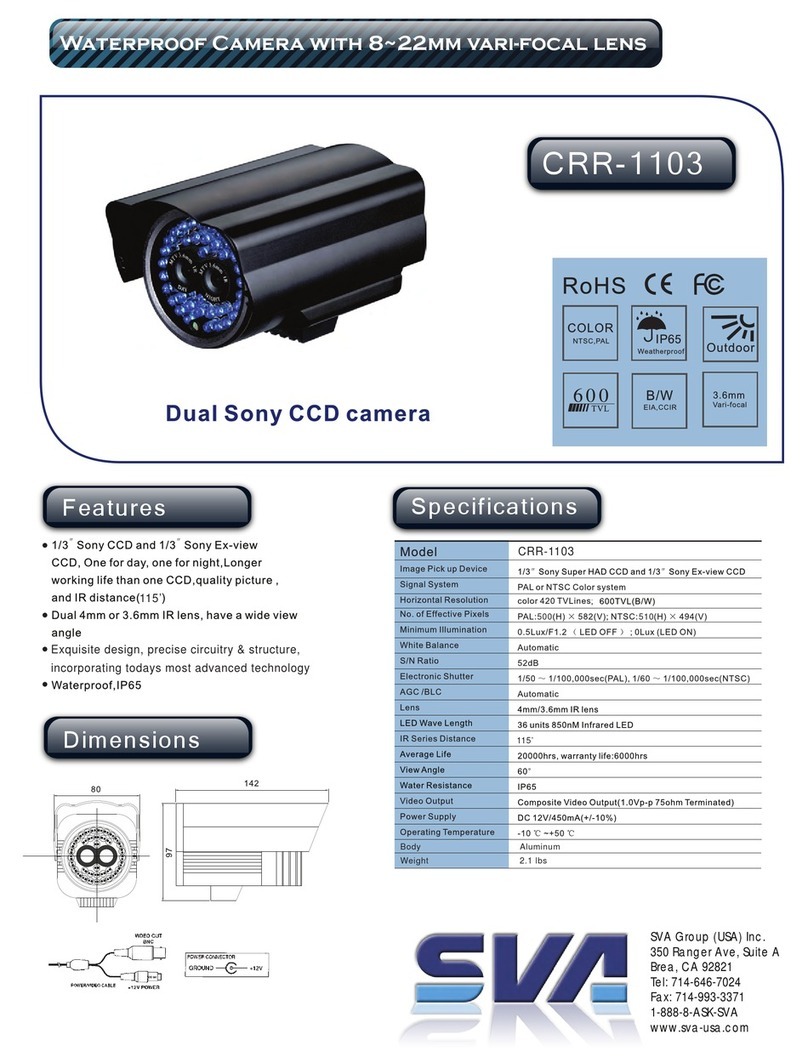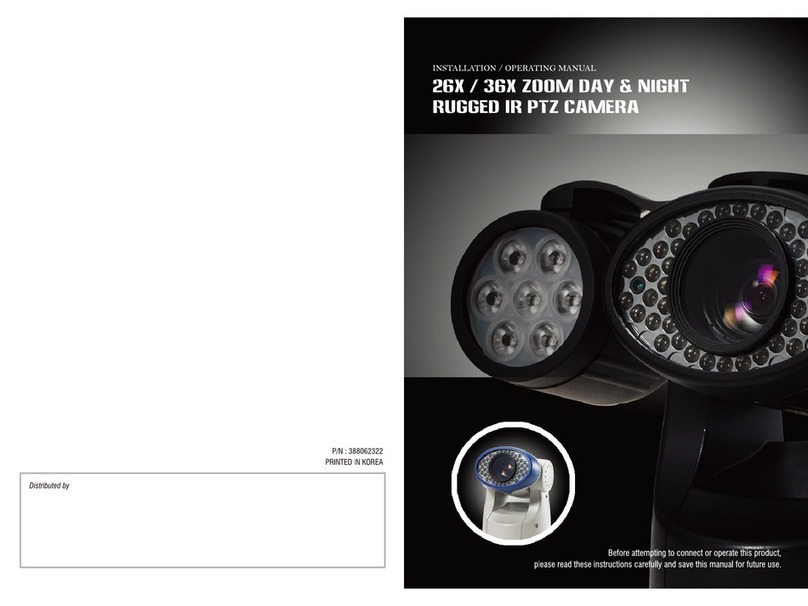Princeton Instruments PI-MAX 3 System User manual

4411-0129
Version 1.A
September 8, 2010
*4411-0069*

Copyright 2009-2010 Princeton Instruments, a division of Roper Scientific, Inc.
3660 Quakerbridge Rd
Trenton, NJ 08619
TEL: 800-874-9789 / 609-587-9797
FAX: 609-587-1970
All rights reserved. No part of this publication may be reproduced by any means without the written
permission of Princeton Instruments, a division of Roper Scientific, Inc. ("Princeton Instruments").
Printed in the United States of America.
PI-MAX is a registered trademark of Roper Scientific, Inc.
PVCAM is a registered trademark of Photometrics, Ltd. Corporation
Scientific Imaging ToolKit and SITK are trademarks of R Cubed Software Consultants, LLC.
Windows and Windows Vista are registered trademarks of Microsoft Corporation in the United States
and/or other countries.
The information in this publication is believed to be accurate as of the publication release date. However,
Princeton Instruments does not assume any responsibility for any consequences including any damages
resulting from the use thereof. The information contained herein is subject to change without notice.
Revision of this publication may be issued to incorporate such change.

iii
Table of Contents
Attention! ..............................................................................................................x
Chapter 1 Introduction...................................................................................... 11
PI-MAX3 System Components ........................................................................................ 11
Camera Head..............................................................................................................11
Cable...........................................................................................................................12
Summary of PI-MAX3 Data Acquisition ......................................................................... 12
Safety Information............................................................................................................14
Safety Related Symbols Used in This Manual........................................................... 14
Grounding and Safety................................................................................................. 14
Intensifier Modes and Safety......................................................................................14
Audible Alarm............................................................................................................15
High Intensity Light Damage.....................................................................................15
Precautions........................................................................................................................15
Cleaning and Maintenance................................................................................................16
Cleaning the Camera.................................................................................................. 16
Cleaning Optical Surfaces –UnigenTMII Coating...................................................... 16
Cleaning Optical Surfaces –Protective Window....................................................... 16
Flushing and Refilling the CCD Chamber .................................................................16
Repairs..............................................................................................................................16
Manual Organization ........................................................................................................17
Chapter 2 Installation Overview....................................................................... 19
Chapter 3 System Setup................................................................................... 21
Introduction....................................................................................................................... 21
Dangers and Warnings......................................................................................................21
Unpacking the System ...................................................................................................... 21
Checking the Equipment and Parts Inventory...................................................................21
System Requirements .......................................................................................................22
Environmental............................................................................................................22
Ventilation.................................................................................................................. 22
Power.......................................................................................................................... 23
Host Computer ...........................................................................................................23
Mounting the PI-MAX3....................................................................................................23
Imaging Applications................................................................................................. 23
Spectroscopy Applications.........................................................................................24
Software Installation.........................................................................................................24
Making the Camera-Circulator Connections ....................................................................25
Making the Camera to Dry Nitrogen Source Connections ............................................... 26
Entering the Default Camera System Parameters into WinX (WinView/32,
WinSpec/32, or WinXTest/32)..................................................................................... 26

iv PI-MAX®3 System Manual Version 1.A
Chapter 4 First Light......................................................................................... 27
Introduction....................................................................................................................... 27
Required Equipment and Cables.......................................................................................27
Cable Connections............................................................................................................27
Before Turning on the System..........................................................................................28
Turning on the System and Setting Up the Software........................................................ 28
Configuring the Software.................................................................................................. 28
Setup menu................................................................................................................. 28
Acquisition menu .......................................................................................................29
Initial Data Acquisition.....................................................................................................30
Focusing............................................................................................................................31
Final Comments................................................................................................................ 31
Chapter 5 General Operation Factors ............................................................. 33
Introduction....................................................................................................................... 33
Data Acquisition Sequence...............................................................................................33
System On/Off Sequences ................................................................................................ 34
Pre-Exposure Removal of Accumulated Charge .............................................................. 34
Introduction................................................................................................................34
Dark Charge ...............................................................................................................34
Clean Cycles...............................................................................................................35
Phosphor Decay Time....................................................................................................... 36
Temperature Control.........................................................................................................36
Cooling Method..........................................................................................................36
Setting the Temperature .............................................................................................37
Exposure ...........................................................................................................................37
Exposure with an Image Intensifier............................................................................38
Saturation ...................................................................................................................38
Background Subtraction ................................................................................................... 38
Readout of the Array.........................................................................................................39
Interline CCD Readout............................................................................................... 39
Full Frame CCD Readout........................................................................................... 42
Binned Readout (Hardware Binning)......................................................................... 43
Software Binning..............................................................................................................47
Digitization .......................................................................................................................47
Logic Out Control.............................................................................................................47
Experiment Setup|Main .................................................................................................... 49
Number of Images/Spectra and Accumulations.........................................................49
CCD Readout .............................................................................................................49
Intensifier Gain...........................................................................................................49
Intensifier Mode.........................................................................................................50
Experiment Setup|Timing................................................................................................. 50
Timing Mode.............................................................................................................. 50
Fast Mode or Safe Mode ............................................................................................50
Delay Time................................................................................................................. 51
Chapter 6 Gated Operation............................................................................... 53
Introduction....................................................................................................................... 53
Precautionary Measures.................................................................................................... 54
Intensifier Modes and Safety......................................................................................54

Table of Contents v
Alarm.......................................................................................................................... 54
Timing Mode ....................................................................................................................55
MCP Bracket Pulsing........................................................................................................55
Introduction................................................................................................................55
Bracket Pulsing in LIF Measurements .......................................................................56
Bracket Pulsing in Nanosecond Pump Probe Experiments........................................ 56
Limitations of Bracket Pulse Gating ..........................................................................57
Impact of Bracket Pulsing on Delay...........................................................................57
Setup...........................................................................................................................58
Additional Experiments.................................................................................................... 58
Introduction................................................................................................................58
Procedure for Setting up and Performing a Swept Gate Experiment (Fixed
Width, Variable Delay) ..............................................................................................59
Procedure for Setting up and Performing a Single Shot Experiment.........................68
Procedure for Setting up and Performing a Swept Gate Experiment (Variable
Width, Variable Delay): .............................................................................................71
Procedure for Setting up and Performing a Static Gate Experiment (Fixed
Width, Fixed Delay)................................................................................................... 71
Chapter 7 Timing Generator Pulses and Sequences..................................... 73
Pulse Set............................................................................................................................73
Description .................................................................................................................73
Supported Timing Generator Trigger Modes:............................................................73
Single Sequence................................................................................................................ 74
Supported Timing Generator Trigger Modes:............................................................ 74
Chapter 8 Dual Image Feature (DIF) ................................................................ 75
Introduction....................................................................................................................... 75
Requirements ....................................................................................................................75
Interline CCD Operation...................................................................................................75
Timing Modes...................................................................................................................76
Setup .................................................................................................................................76
Hardware.................................................................................................................... 76
Software .....................................................................................................................76
Operation.................................................................................................................... 76
Tips and Tricks .................................................................................................................82
Chapter 9 Tips and Tricks ................................................................................ 83
Introduction....................................................................................................................... 83
Overexposure Protection................................................................................................... 83
Signal Delay...................................................................................................................... 83
Introduction................................................................................................................83
Time Budgets .............................................................................................................84
Measuring Coincidence.............................................................................................. 84
Adjusting the Signal Delay.........................................................................................85
Optimizing the Gate Width and Delay.......................................................................85
Lasers................................................................................................................................86
Free Running Lasers................................................................................................... 86
Triggered Lasers.........................................................................................................86
Jitter............................................................................................................................87

vi PI-MAX®3 System Manual Version 1.A
Inhibiting the Pulser during Readout................................................................................ 87
Lens Performance .............................................................................................................87
Throughput.................................................................................................................87
Depth of Field.............................................................................................................87
Baseline Signal ................................................................................................................. 88
Temperature Lock............................................................................................................. 88
Intensifier Alarm............................................................................................................... 88
Chapter 10 System Component Descriptions................................................ 91
Introduction....................................................................................................................... 91
PI-MAX3 Camera............................................................................................................. 91
Mount Adapters..........................................................................................................91
Switches, Connectors and Indicators..........................................................................91
Interface Card ................................................................................................................... 93
Extender Bracket Kit ........................................................................................................93
CoolCUBEII Coolant Circulator (Option).........................................................................93
Spectrograph (Option) ...................................................................................................... 93
Cables ...............................................................................................................................93
Tubing...............................................................................................................................94
Application Software........................................................................................................94
User Manuals.................................................................................................................... 94
Chapter 11 Troubleshooting ............................................................................ 95
Introduction....................................................................................................................... 95
Alarm Sounds Sporadically .............................................................................................. 96
Alarm Sounds Repetitively............................................................................................... 96
Baseline Signal Suddenly Changes by > 1000 ADU........................................................96
Camera Is Not Responding............................................................................................... 96
Camera Stops Working..................................................................................................... 97
Cooling Troubleshooting.................................................................................................. 97
Temperature Lock Cannot be Achieved or Maintained. ............................................97
Gradual Deterioration of Cooling Capability............................................................. 98
Data Loss or Serial Violation............................................................................................98
Error Occurs at Computer Powerup..................................................................................98
Ethernet Network is not accessible...................................................................................98
Excessive Readout Noise.................................................................................................. 99
Appendix A Specifications............................................................................. 101
PI-MAX3........................................................................................................................ 101
Internal Pulser................................................................................................................. 106
Intensifier Quantum Efficiency....................................................................................... 107
CoolCUBEII Circulator...................................................................................................108
Computer ........................................................................................................................108
Operating Environment................................................................................................... 108
Appendix B Outline Drawings........................................................................ 109
PI-MAX3........................................................................................................................ 109
PI-MAX3 Power Supply.................................................................................................112
CoolCUBEII Circulator...................................................................................................113

Table of Contents vii
Appendix C Software...................................................................................... 115
Introduction..................................................................................................................... 115
Camera State................................................................................................................... 115
Main tab page (Experiment Setup on Acquisition menu)...............................................116
Pulsers dialog box...........................................................................................................117
SuperSYNCHRO dialog box..........................................................................................117
Appendix D Extender Bracket Kit.................................................................. 119
Appendix E Mounting and Focusing C-Mount and F-Mount Lenses........ 121
Mounting the Lens..........................................................................................................121
Mounting Orientation .....................................................................................................121
Focusing..........................................................................................................................122
Appendix F C-, F-, and Spectroscopy-Mount Adapters................................. 123
Appendix G Spectrograph Adapters............................................................. 125
Introduction..................................................................................................................... 125
Spectrograph-Detector Focusing ....................................................................................125
Acton (Sliding Tube) ...................................................................................................... 127
Acton (C-Mount Adapter) .............................................................................................. 128
Chromex 250 IS..............................................................................................................129
ISA HR 320 ....................................................................................................................130
ISA HR 640 ....................................................................................................................131
SPEX 270M.................................................................................................................... 132
SPEX 500M.................................................................................................................... 133
SPEX TripleMate............................................................................................................134
Appendix H Glossary...................................................................................... 135
Declaration of Conformity.............................................................................. 141
Warranty & Service ......................................................................................... 143
Limited Warranty............................................................................................................143
Basic Limited One (1) Year Warranty .....................................................................143
Limited One (1) Year Warranty on Refurbished or Discontinued Products............ 143
XP Vacuum Chamber Limited Lifetime Warranty ..................................................143
Sealed Chamber Integrity Limited 12 Month Warranty...........................................143
Vacuum Integrity Limited 12 Month Warranty ....................................................... 144
Image Intensifier Detector Limited One Year Warranty..........................................144
X-Ray Detector Limited One Year Warranty .......................................................... 144
Software Limited Warranty......................................................................................144
Owner's Manual and Troubleshooting .....................................................................144
Your Responsibility.................................................................................................. 145
Contact Information........................................................................................................146
Index................................................................................................................. 147

viii PI-MAX®3 System Manual Version 1.A
Figures
Figure 1. Typical PI-MAX3 System Components...........................................................11
Figure 2. Major Components of the Intensifier-CCD...................................................... 12
Figure 3. PI-MAX3 System Diagram..............................................................................20
Figure 4. WinView Installation: Select Components dialog box....................................24
Figure 5. Camera Detection Wizard - Welcome dialog box............................................26
Figure 6. Block Diagram of Signal Path in Standard PI-MAX3 System.........................33
Figure 7. Clean Cycles in Internal Trigger Mode of Operation.......................................35
Figure 8. Phosphor Decay Time ......................................................................................36
Figure 9. Interline CCD Readout.....................................................................................39
Figure 10. Non-Overlapped Mode Exposure and Readout.............................................. 40
Figure 11. Full Frame CCD Readout...............................................................................42
Figure 12. 2 × 2 Binning for Interline CCD - Dual Port Readout.................................... 45
Figure 13. 2 × 2 Binning for Full Frame CCD - Single Port Readout.............................45
Figure 14. Experiment Setup|ROI Setup tab.................................................................... 46
Figure 15. Partial Frame 2 × 2 Binning for Interline CCD - Single Port Readout (ROI is
not centered and symmetrical horizontally) ...................................................46
Figure 16. PI-MAX3 Setup| Hardware|Controller/Camera tab page............................... 47
Figure 17. Comparison of READOUT, SHUTTER, and ACQUIRING Logic Output
Levels .............................................................................................................48
Figure 18. Experiment Setup|Main tab ............................................................................49
Figure 19. Experiment Setup|Timing dialog box.............................................................50
Figure 20. Safe Mode and Fast Mode Operation.............................................................52
Figure 21. Timing: Bracket Pulsing.................................................................................56
Figure 22. PI-MAX3 Timing for MCP Bracket Pulsing..................................................58
Figure 23. Experiments with the PI-MAX3..................................................................... 58
Figure 24. Experiment is Master Clock: Hardware Setup and Timing Diagram.............60
Figure 25. Hardware Setup: Controller/ Camera tab page...............................................61
Figure 26. Define Spectrograph and Install/Remove Spectrographs dialogs .................. 62
Figure 27. Move Spectrograph dialog .............................................................................62
Figure 28. Experiment Setup: Main and Timing tab pages .............................................63
Figure 29. Experiment Setup: ADC and ROI Setup tab pages ........................................ 63
Figure 30. SuperSYNCHRO: Trigger tab page ...............................................................64
Figure 31. SuperSYNCHRO: Trigger In and Gating tab pages.......................................64
Figure 32. Sequential Gating Setup and Width/Delay Sequence dialog boxes ...............65
Figure 33. Trigger Out tab page.......................................................................................66
Figure 34. Experiment Setup: Timing and Main tab pages .............................................66
Figure 35. Experiment Results in 3-D .............................................................................67
Figure 36. PI-MAX3 SyncMASTER is Master Clock: Hardware Setup and Timing
Diagram..........................................................................................................68
Figure 37. Single Shot: Hardware Setup.......................................................................... 69
Figure 38. Cleans and Skips: Default Values Loaded ..................................................... 69
Figure 39. Experiment Setup: Gain Selected................................................................... 70
Figure 40. Repetitive Gating Setup: 100 ns Width, 10 ns Delay..................................... 70
Figure 41. Single Shot Result: Fluorescence Spot, 100 ns Width, 10 ns Delay ..............70
Figure 42. Single Shot Result: Fluorescence Spot, 100 ns Width, 10 ns Delay, Binned
Vertically........................................................................................................71
Figure 43. Repetitive Gating Setup dialog box................................................................71
Figure 44. Pulse Set .........................................................................................................73

Table of Contents ix
Figure 45. Trigger per Pulse ............................................................................................ 73
Figure 46. Sequence with 3 Repetitions .......................................................................... 74
Figure 47. Timing Diagram: Sequence with 3 Repetitions and Trigger per Pulse .......... 74
Figure 48. System Diagram: DIF Operation.................................................................... 76
Figure 49. DIF Operation: Single Trigger Timing Diagram............................................77
Figure 50. Hardware Setup|Controller/Camera tab..........................................................77
Figure 51. Experiment Setup|Main and Timing tab.........................................................78
Figure 52. Pulsers dialog .................................................................................................78
Figure 53. Gating tab .......................................................................................................78
Figure 54. DIF Gating Setup dialog –Single Trigger...................................................... 78
Figure 55. Trigger In and Trigger Out tabs...................................................................... 79
Figure 56. DIF Operation: Dual Trigger Timing Diagram..............................................80
Figure 57. Hardware Setup|Controller/Camera tab..........................................................80
Figure 58. Experiment Setup|Main and Timing tabs ....................................................... 81
Figure 59. Pulsers dialog .................................................................................................81
Figure 60. Gating tab .......................................................................................................81
Figure 61. DIF Gating Setup dialog –Dual Trigger........................................................ 81
Figure 62. Trigger In and Trigger Out tabs...................................................................... 82
Figure 63. PI-MAX3 Rear Panel ..................................................................................... 91
Figure 64. Ebus Driver Installation Tool dialog box .......................................................99
Figure 65. AUX I/O Connector Pinout.......................................................................... 104
Figure 66. Intensifier QE Curves...................................................................................107
Figure 67. Outline Drawing: PI-MAX3 with C-mount Adapter....................................109
Figure 68. Outline Drawing: PI-MAX3 with F-mount Adapter....................................110
Figure 69. Outline Drawing: PI-MAX3 with Spectroscopy-mount Adapter................. 111
Figure 70. Outline Drawing: PI-MAX3 Power Supply .................................................112
Figure 71. Outline Drawing: CoolCUBEII Circulator....................................................113
Figure 72. Camera State dialog box...............................................................................115
Figure 73. Main tab page with PI-MAX3 camera.......................................................... 116
Figure 74. Pulsers dialog box......................................................................................... 117
Figure 75. SuperSYNCHRO dialog box........................................................................117
Figure 76. Extender Bracket Kit mounted to PI-MAX3................................................119
Figure 77. F-mount (Nikon) Lens Adapter....................................................................121
Figure 78. Screwdriver with Reversible Flat and Phillips tips.......................................123
Figure 79. PI-MAX3 Mount Adapters...........................................................................123
Tables
Table 1. Readout Rates for Kodak 1024 × 1024 Array at 16 MHz Dual Port................. 41
Table 2. Spectral Rates for e2v CCD30-11 Array at 2 MHz........................................... 43
Table 3. Timing Mode, Shutter Control, and Ext. Trigger Input when using the Internal
Timing Generator ........................................................................................... 55
Table 4. Single Shot Experiment Time Budget ...............................................................68
Table 5. CCD Specifications.......................................................................................... 101
Table 6. AUX I/O Cable Leads......................................................................................104
Table 7. AUX I/O Connector Pinout and Signal Description........................................105
Table 8. Spectrograph Adapters.....................................................................................126

x PI-MAX®3 System Manual Version 1.A
Attention!
Intensified CCD detectors, such as the PI-MAX®3, when biased ON, can be irreparably
damaged if continuously exposed to light levels higher than twice the A/D saturation
level. Thus it is critical that you not establish conditions that could result in damage to
the intensifier. Although intensified detectors are less prone to damage from background
light when operated gated, they are at significant risk to damage from high-intensity light
sources like a laser. High intensity sources can damage the intensifier before the
protection circuits have time to respond, or even cause spot damage without the
protection circuits acting at all. If a sustained alarm indication occurs when the controller
is turned on, either completely cover the intensifier to reduce the light to halt the overload
condition, or reduce the laboratory illumination still further until safe operating
conditions are established.
Alarm
To reduce the risk of detector damage, the PI-MAX3 detector is equipped with an audible
alarm in the detector head, activated when the intensity of light falling on the image
intensifier exceeds a preset threshold. While the alarm is sounding, the photocathode is
disabled. Immediately switch the I.I.T. switch (on the back of the PI-MAX3) to the OFF
position. Cover the detector window and only switch the I.I.T. switch to ON after the
illumination level has been lowered. If the alarm sounds continuously even when the
illumination level is adequately low, shut the system down and contact the factory for
guidance.
Note: It is normal for the alarm to sound briefly when the system is turned on.
Discontinue operation and contact the factory at once if sporadic or continuous
unwarranted alarms occur. They may indicate intensifier damage or another situation that
requires immediate attention.
UnigenTMII Coating
For greater sensitivity, the PI-MAX3 camera with Unigen II coating comes without a
protective window over the intensifier. Do not scratch the image intensifier’s coated
surface. To remove any lint or dust use very clean dry nitrogen with < 5 PSI pressure. If
you have any questions please contact your sales contact or the factory.
WARNING
Caution

11
Chapter 1
Introduction
The Princeton Instruments PI-MAX®3 Intensified CCD camera is designed for general
macro-imaging and microscopy imaging applications. It is ideal for applications
involving ultra low light measurements, or measurements of transient effects. PI-MAX3
uses a proximity-focused microchannel plate (MCP) image intensifier (Gen II and
Filmless Gen III intensifiers available) fiber-optically coupled to a CCD array. The
fastest intensifiers can be gated in as little as 3 ns or less with an exceptionally high
on/off light-transmission ratio. The CCD array provides a low noise, high dynamic range
readout device that can be scanned at a variety of pixel rates. A number of different
arrays are available to match the PI-MAX3to the widest possible range of experimental
requirements. In operation, data acquired by the camera is routed to the computer for
processing and display. The computer controls both the system configuration and data
acquisition via software, of which Princeton Instruments WinView/32 is an example.
PI-MAX3 System Components
All PI-MAX3 systems consist of
standard hardware and software as
well as the appropriate interface
hardware for your computer
system.
Camera Head
The PI-MAX3 camera head
houses the CCD and intensifier
and it supplies all of the high
voltages needed to operate the
intensifier (see Chapter 3 for more
information).
Figure 1. Typical PI-MAX3 System Components
Cooling within the camera head is performed by a cooling fan and a multi-stage Peltier
cooler that is thermally coupled to the CCD (liquid coolant circulation can also be used
for the PI-MAX3 camera). Photocathode cooling to reduce equivalent background
illumination (EBI) can be achieved via a dry nitrogen source. C-, F-, and spectroscopy
mount adapters are supplied (one of which is factory-installed).
The camera can be operated in one of the following two modes: Safe mode and Gate mode.
In Safe mode, the photocathode is gated off. In Gate mode, the photocathode is biased on
only during the time each gate pulse is applied.
The PI-MAX3 contains the analog and digital electronics, scan control and exposure
timing hardware, and controller I/O connectors. Readout modes supported include full
resolution, simultaneous multiple subimages, and nonuniform binning. Single or multiple
software-defined regions of interest can also be tested without having to digitize all the
pixels of the array. Flexible exposure, set through software, is also fully supported.

12 PI-MAX®3 System Manual Version 1.A
The PI-MAX3 contains two High Speed analog-to-digital converters. The effective
digitization rate is software-selectable. After the data is converted, it is transferred
directly from the camera to the host computer memory via a high-speed serial link.
Cable
AUX I/O Cable: 6050-0660, female DB26 to 5 BNC.
Computer Interface:
Standard Ethernet Cable: 6050-0621, 5 meter. Other lengths up to 100 m are
available.
User-provided GiGE interface card. (Intel Pro1000 recommended)
Tubing
Clear PVC tubing, 3’, 5/32” OD, 1/32” wall (McMaster-Carr 5006K42) for dry
nitrogen cooling of photocathode.
Manuals
PI-MAX3 System manual and optional application software manual.
Optional Application Software
Princeton Instruments' WinView/32 or WinSpec/32.
Summary of PI-MAX3 Data Acquisition
Figure 2. Major Components of the Intensifier-CCD
In the PI-MAX3 camera, the input image is focused onto the photocathode of an image
intensifier tube. The tube electronically amplifies the image and outputs it, much brighter,
as gray-scaled green light. That light is then coupled to the CCD using a fused fiber-optic
bundle from the output of the image intensifier to the front side of the CCD. The image at

Chapter 1 Introduction 13
the output of the image intensifier is translated to the input of the CCD at the same size.*
After being detected by the CCD, the image is read out to the Controller, where it is
digitized and transferred to the computer for processing via a high-speed data link.
The sequence below steps through the process by which photons are converted to data
that can be displayed on a computer monitor. For the sake of simplicity, triggers and gate
pulses are not mentioned and it is assumed that a high speed (GigE) serial interface card
is installed in the host computer. When reading through the sequence, keep in mind that
electrons are attracted to more positively charged surfaces and are repelled by more
negatively charged surfaces. This principal is used to control electron flow through the
intensifier tube: changing the photocathode voltage with respect to the voltage at the
MCP input is used to switch (gate) the intensifier on and off.
1. Incident photons pass through the intensifier input window, strike the photocathode,
and release electrons. (See Figure 2 above.)
2. Assuming that the intensifier is gated ON (the photocathode is more negative than the
MCP input), these electrons will be attracted to the MCP input. Gating acts like a
shutter in that gating the intensifier on allows the CCD to "see" light and gating the
intensifier off prevents the CCD from seeing light.
3. Since the voltage at the MCP output is much more positive, most of the electrons
accelerate into the MCP channels and, if they hit the channel walls, will generate
additional electrons, resulting in electron gain. The amount of gain is adjusted by
increasing or decreasing the voltage at the MCP output.
4. When the electrons exit the channels they are further accelerated by a constant high
voltage (5-6 kV) and strike the phosphor coating on the fluorescent screen causing it
to release photons. Because of the MCP gain, there are now many photons for each
photon that struck the photocathode surface.
5. The photons released by the coating are transferred to the surface of the CCD (via
fiberoptic or lens) and produce charge at the pixels they strike. Note that fiberoptic
coupling is not only the most efficient coupling possible, but lens-coupling effects
such as vignetting are eliminated.
6. Charge accumulates in the pixel wells until the intensifier is gated off (the
photocathode is more positive than the MCP input).
7. At that point, the accumulated charge is shifted to the serial register where it is read
out to an on-chip amplifier that converts the charge to an analog voltage.
8. This voltage is input to the selected analog-to-digital (A/D) converter(s) where it is
digitally encoded. The conversion speed and the quality of the data are dependent on
the effective ADC rate.
9. The digitized information is transmitted from the camera head through the Ethernet
cable to the interface card in the host computer where it is stored in RAM.
10. The application software retrieves the information from RAM, processes it, displays
it, and/or stores it to a file according to user-defined settings.
*Units having a tapered fiber optic bundle may also be available. Contact the factory for
information.

14 PI-MAX®3 System Manual Version 1.A
Safety Information
Safety Related Symbols Used in This Manual
Caution! The use of this symbol on equipment indicates that one or more
nearby items should not be operated without first consulting the manual. The
same symbol appears in the manual adjacent to the text that discusses the
hardware item(s) in question.
Caution! Risk of electric shock! The use of this symbol on equipment
indicates that one or more nearby items pose an electric shock hazard and
should be regarded as potentially dangerous. This same symbol appears in the
manual adjacent to the text that discusses the hardware item(s) in question.
Grounding and Safety
The PI-MAX3 and power supply are of Class I category as defined in IEC Publication
348 (Safety Requirements for Electronic Measuring Apparatus). They are designed for
indoor operation only. Before turning on the power supply, the ground prong of the
powercord plug must be properly connected to the ground connector of the wall outlet.
The wall outlet must have a third prong, or must be properly connected to an adapter that
complies with these safety requirements.
If the equipment is damaged, the protective grounding could be disconnected. Do not use
damaged equipment until its safety has been verified by authorized personnel.
Disconnecting the protective earth terminal, inside or outside the apparatus, or any
tampering with its operation is also prohibited.
Inspect the supplied powercord. If it is not compatible with the power socket, replace the
cord with one that has suitable connectors on both ends.
The PI-MAX3 has internal power supplies that generate hazardous (and potentially
lethal) voltages. It contains no user-serviceable parts. Do not attempt to operate it with
the covers removed.
WARNING!
Replacement powercords or power plugs must have the same polarity as that of the
original ones to avoid hazard due to electrical shock.
Intensifier Modes and Safety
The Experiment Setup Main screen in WinX applications (WinView/32 and WinSpec/32)
allows you to select one of two intensifier modes: Gate Mode or Safe Mode. In Gate
Mode, the photocathode is biased on only for the time that each gate pulse is applied. As
a result, the tolerance to room light is higher in gated operation, but the risk of damaging
overload from intense light sources such as lasers remains. In fact, intense light sources in
gated experiments can cause spot damage that would be undetected by the alarm circuit.
In Safe Mode, the photocathode is continuously biased OFF and the intensifier is as safe
as it can be.
WARNING!

Chapter 1 Introduction 15
Audible Alarm
To reduce the risk of camera damage, the PI-MAX3 camera is equipped with an audible
alarm in the camera head, activated when the intensity of light falling on the image
intensifier exceeds a preset threshold. While the alarm is sounding, the photocathode is
disabled. Immediately switch the I.I.T. switch on the back of the PI-MAX3 to the OFF
position. Cover the detector window and only switch the I.I.T. switch to ON after the
illumination level has been lowered. If the alarm sounds continuously even when the
illumination level is adequately low, shut the system down and contact the factory for
guidance.
Note: It is normal for the alarm to sound briefly when the system is turned on.
Caution
Discontinue operation and contact the factory at once if sporadic or continuous
unwarranted alarms occur. They may indicate intensifier damage or another situation that
requires immediate attention.
High Intensity Light Damage
Intensified CCD cameras such as the PI-MAX3, when biased ON, can be irreparably
damaged if continuously exposed to light levels higher than twice the A/D saturation
level. Thus it is critical that you not establish conditions that could result in damage to
the intensifier. Although intensified cameras are less prone to damage from background
light when operated gated, they are at significant risk to damage from high-intensity light
sources like a laser. High intensity sources can damage the intensifier before the
protection circuits have time to respond, or even cause spot damage without the
protection circuits acting at all. If a sustained alarm indication occurs when the controller
is turned on, immediately switch the I.I.T. switch on the back of the PI-MAX3 to the
OFF position. Cover the detector window and only switch the I.I.T. switch to ON after
the illumination level has been lowered.
If the alarm sounds continuously even when the illumination level is adequately low, shut
the system down and contact the factory for guidance.
Precautions
To prevent permanently damaging the system, please observe the following precautions:
Always switch off and unplug the PI-MAX3 power supply before changing your
system configuration in any way.
Whenever you turn the PI-MAX3 power supply, be sure to leave it OFF for at least
30 seconds before switching it back ON. If you switch it ON too soon, a fault logic
state is established that causes the overload alarm to sound continuously.
The CCD array is very sensitive to static electricity. Touching the CCD can destroy
it. Operations requiring contact with the device can only be performed at the factory.
Never operate the camera cooled without proper evacuation or backfill. This could
damage the CCD! Do not open the purge valve.
Never connect or disconnect any cable while the PI-MAX3 system is powered on.
Reconnecting a charged cable may damage the CCD.
Never prevent the free flow of air through the equipment by blocking the air vents.
WARNING!

16 PI-MAX®3 System Manual Version 1.A
Cleaning and Maintenance
Cleaning the Camera
Although there is no periodic maintenance that must be performed on the PI-MAX3
Camera, users are advised to wipe it down with a clean damp cloth from time to time.
Note: The cloth should be just damp enough to pick up dust –not wet.
This operation should only be done on the external surfaces and with all covers secured.
In dampening the cloth, use clean water only. No soap, solvents or abrasives should be
used. Not only are they not required, but they could damage the finish of the surfaces on
which they are used.
Cleaning Optical Surfaces –UnigenTMII Coating
For greater sensitivity, the PI-MAX3 camera with Unigen II coating comes without a
protective window over the intensifier. Do not scratch the image intensifier’s coated
surface. To remove any lint or dust use very clean dry nitrogen with < 5 PSI pressure. If
you have any questions please contact your sales contact or the factory.
Cleaning Optical Surfaces –Protective Window
Optical surfaces may need to be cleaned due to the accumulation of atmospheric dust. We
advise that the drag-wipe technique be used. This involves dipping a clean cellulose lens
tissue into clean anhydrous methanol, and then dragging the dampened tissue over the optical
surface to be cleaned. Do not allow any other material to touch the optical surfaces.
Flushing and Refilling the CCD Chamber
Under normal conditions the CCD chamber is sealed and backfilled so there is no danger
of damage due to condensation.
Operating an Intensified PI-MAX3 that is no longer backfilled with dry air or dry
nitrogen may result in condensation on the array that could cause irreversible damage.
Such damage would not be covered by the Warranty.
Before a PI-MAX3 camera leaves the factory, its CCD chamber is backfilled with clean
dry air or dry nitrogen. For proper operation it is essential that the integrity of the front
enclosure be maintained.
In normal operation, the CCD chamber should remain sealed for the life of the detector
and should require no maintenance to assure integrity. If it should ever happen that the
CCD chamber becomes unsealed, contact the factory and arrange to return the detector to
the factory where it can be properly flushed, backfilled and resealed again. See page 146
for contact information.
Repairs
Save the original packing materials. Because the PI-MAX3 system contains no user-
serviceable parts, repairs must be done by Princeton Instruments. Should your system
need repair, contact Princeton Instruments customer support for instructions (telephone,
e-mail, and address information are provided on page 146 of this manual).
Use the original packing materials whenever shipping the system or system components.
WARNING!
WARNING!

Chapter 1 Introduction 17
Manual Organization
This manual provides the user with all the information needed to install a PI-MAX3
Intensified CCD camera and place it in operation. Topics covered include a detailed
description of the camera, installation and setup, first time data acquisition, tips and
tricks, microscopy applications, temperature control and more. A brief description of
each of the chapters follows.
Note: "WinX" is a generic term for WinView/32, WinSpec/32, and WinXTest
application software.
Chapter 1, Introduction provides an overview of the PI-MAX3 camera. Topics
include a description, theory of operation, and specifications.
Chapter 2, Installation Overview cross-references system setup actions with the
relevant manuals and/or manual pages. It also contains system layout diagrams.
Chapter 3, System Setup provides detailed directions for installing and setting up
the PI-MAX3 for both spectroscopy and imaging.
Chapter 4, First Light provides abbreviated directions for getting your PI-MAX3
into operation as soon as possible.
Chapter 5, General Operation Factors provides information about experiment
setup, temperature control, background subtraction, array readout, binning, and
digitization.
Chapter 6, Gated Operation discusses issues specific to operating the PI-MAX3
system in gate mode.
Chapter 7, Timing Generator Pulses and Sequences discusses and
illustrates the trigger modes available when operating the system in gate mode.
Chapter 8, Dual Image Feature (DIF) discusses the mode specifically designed
for capturing a pair of gated images in rapid succession.
Chapter 9, Tips and Tricks discusses a number of issues that can have a bearing
on getting good experimental results.
Chapter 10, System Component Descriptions describes the PI-MAX3 camera
and other system components. Includes descriptions of connectors and other front
and rear panel features.
Chapter 11, Troubleshooting provides information regarding possible system
problems.
Appendix A, Specifications provides general specifications as well as operating
environment and internal pulser specifications.
Appendix B, Outline Drawings includes outline drawings for the PI-MAX3
camera, the PI-MAX3 power supply, and the CoolCUBEII coolant circulator.
Appendix C, Software explains how the PI-MAX3 camera is controlled using the
WinX application software.
Appendix D, Extender Bracket Kit explains how to use this kit to mount the
PI-MAX3 to any laboratory table with either 25 mm or 1 inch hole spacing.

18 PI-MAX®3 System Manual Version 1.A
Appendix E, C-Mount and F-Mount Adapters provides information on the
C-Mount and F-Mount adapters available for the PI-MAX3 camera. Also
includes a discussion of lens focusing.
Appendix F, C-, F-, and Spectroscopy-Mount Adapters describes how to
change the adapter on the front of the PI-MAX3 to another type if you have
ordered multiple adapters.
Appendix G, Spectrograph Adapters provides mounting instructions for the
spectroscopy-mount adapter and for the spectrograph adapters available for
PI-MAX3 cameras with spectroscopy-mounts.
Appendix H, Glossary provides definitions of commonly used words and terms
related to intensified camera characteristics and usage.
Declarations of Conformity contains the Declarations of Conformity for PI-MAX3
systems.
Warranty & Service details the warranties for Princeton Instruments equipment
and software.

19
Chapter 2
Installation Overview
The list and diagrams below briefly describe the sequence of actions required to
install your system and prepare to gather data. Refer to the indicated references
for detailed information.
Action
Reference
1. If the system components have not already been unpacked, unpack
them and inspect their carton(s) and the system components for in-
transit damage.
Chapter 3 System Setup,
page 21
2. Verify that all system components have been received.
Chapter 3 System Setup,
page 21
3. If the camera will be used on a spectrograph, mount it to the
equipment using the required adapter(s).
Spectroscopy: Appendix G,
page 125
4. If the appropriate interface card is not already installed in the host
computer, install it and its drivers.
Chapter 3 System Setup,
page 24
5. If the application software is not already installed in the host
computer, install it.
Application manual.
6. With the PI-MAX3 power supply and computer power turned OFF,
connect the Ethernet cable (GigE) to the PI-MAX3 and the interface
card in the host computer.
Chapter 3
System Setup
7. Air-Cooled System: Plug the power supply into the rear of the
camera and plug the power supply into the power source.
Liquid-Cooled System: Make the hose and power connections to
the camera and plug the circulator into the power source. Add
coolant if necessary. Turn on the circulator.
Chapter 3 System Setup,
page 25
8. If the photocathode will be cooled, connect the supplied PVC tubing
to the hose barb on the front of the camera and to a dry nitrogen
source.
Chapter 3 System Setup,
page 26
9. Turn the PI-MAX3 power supply ON.
10. Turn on the computer and begin running the WinX application.
When the computer boots, you may be asked for the location of the
interface drivers. If this is the first time you have used a WinX
application, the Camera Detection wizard will automatically run.
This wizard retrieves information from the camera and enters this
information as the default parameters for your system.
Chapter 3 System Setup,
page 26
WinView/32 or
WinSpec/32 manual

20 PI-MAX®3 System Manual Version 1.A
Action
Reference
11. Verify the hardware setup information or change the parameters, as
appropriate. Enter the pulser information. Enter the experiment setup
parameters. If using a spectrograph, enter that setup information
WinView/32 or
WinSpec/32 manual
12. Set the target array temperature. The typical target temperature is
-25°C.
Setting the Temperature,
page 37
13. When the system reaches temperature lock, begin acquiring data in
focus mode.
Initial Data Acquisition,
page 30
14. Adjust the focus for the best image or spectral lines. If you are using
WinSpec/32, you may want to use the Focus Helper function for this
purpose.
Appendix E C-Mount and
F-Mount Adapters,
page 121
Appendix G Spectroscopy-
Mount and Spectrograph
Adapters, page 125
Figure 3. PI-MAX3 System Diagram
Table of contents
Other Princeton Instruments Security Camera manuals
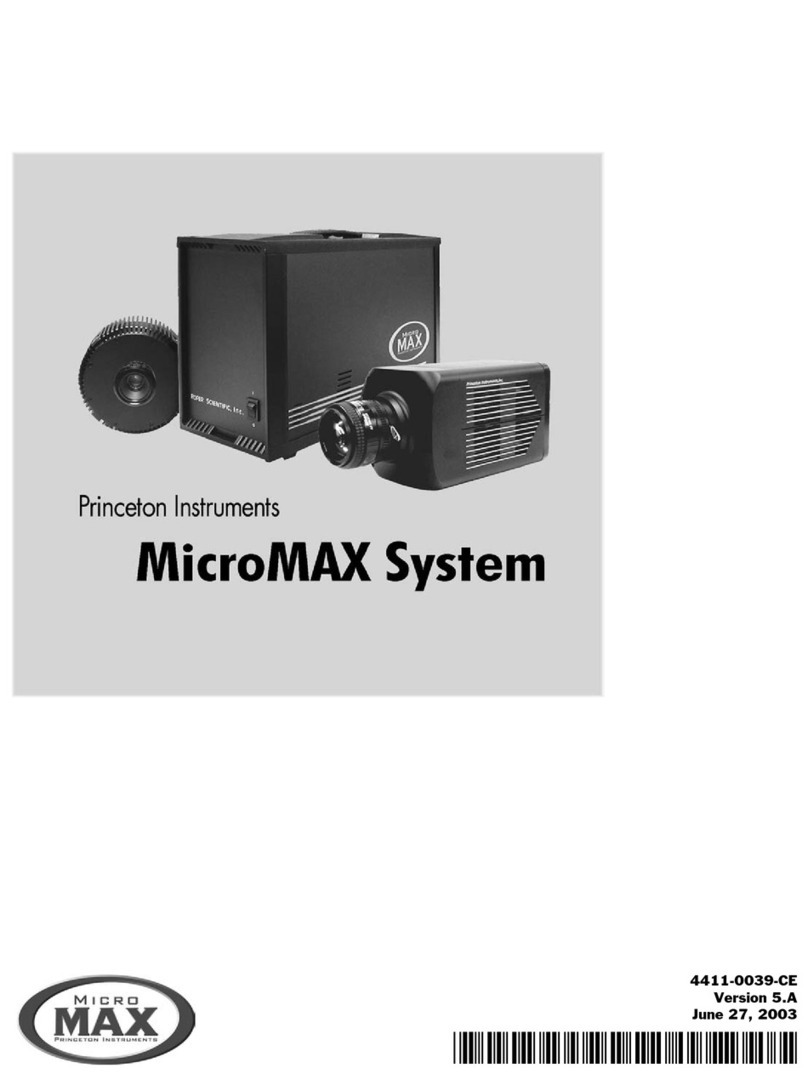
Princeton Instruments
Princeton Instruments MICROMAX SYSTEM User manual
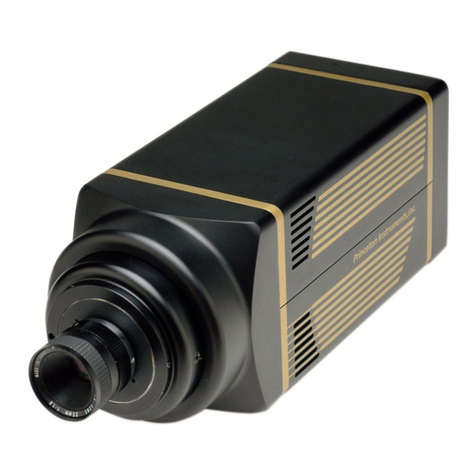
Princeton Instruments
Princeton Instruments PI-MAX System User manual
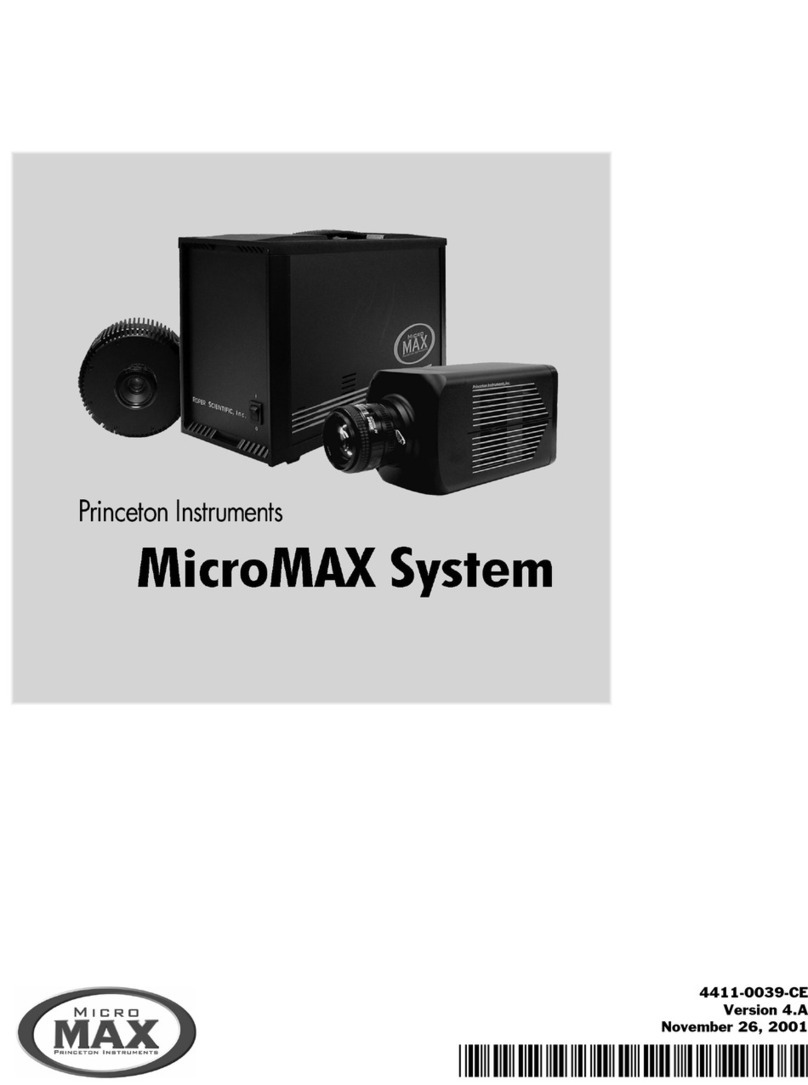
Princeton Instruments
Princeton Instruments MICROMAX SYSTEM User manual
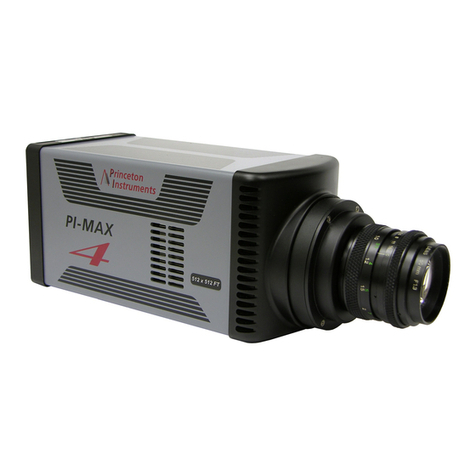
Princeton Instruments
Princeton Instruments PI-MAX4 User manual
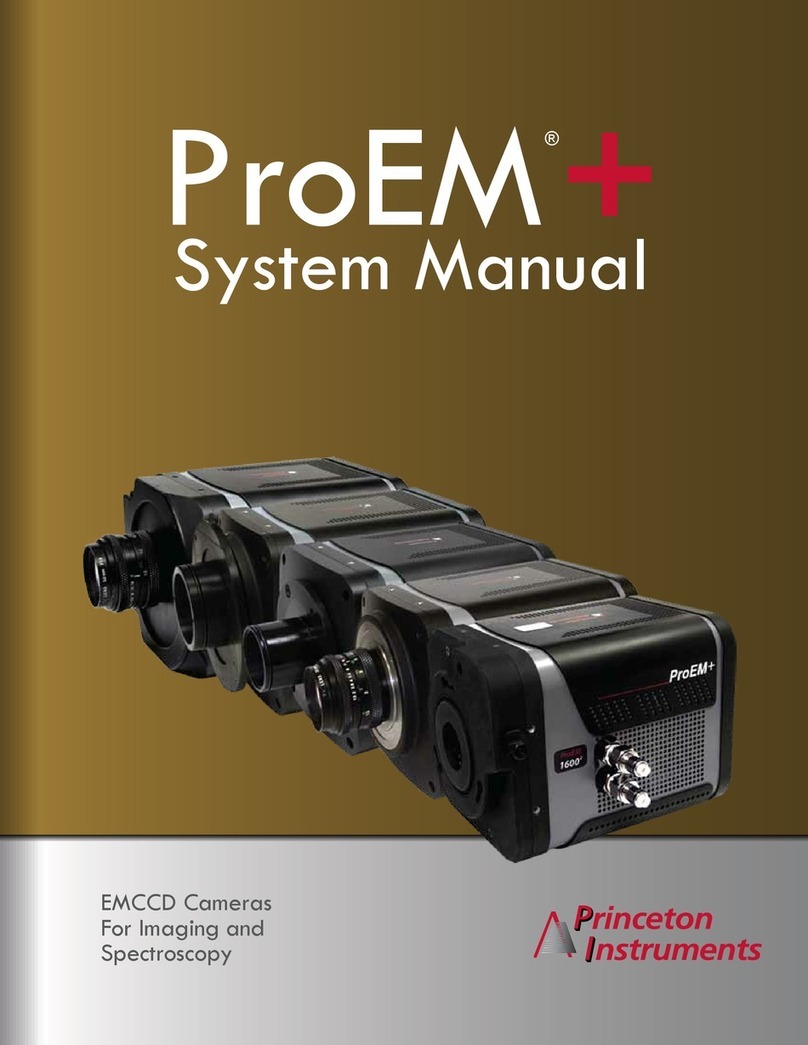
Princeton Instruments
Princeton Instruments ProEM+ EMCCD User manual
